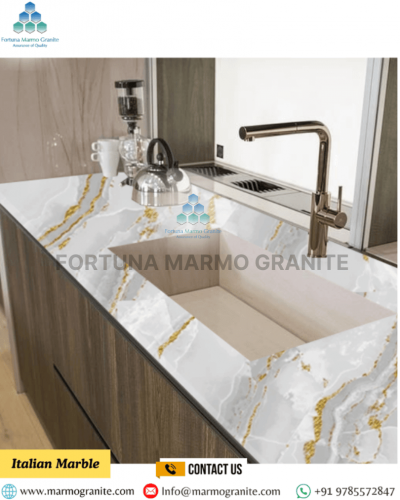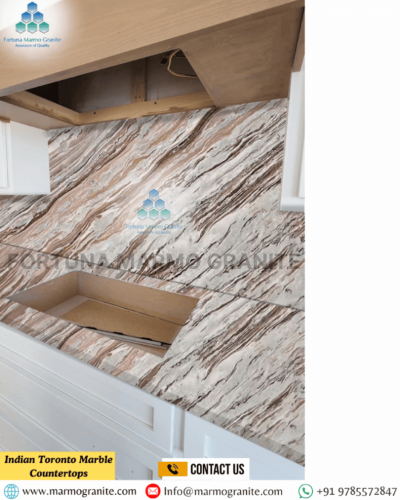Italian Marble vs Indian Marble: Which One Should You Choose for Your Dream Space?
Italian Marble vs Indian Marble Building or renovating your dream space is an exciting and personal journey. It is filled with decisions that shape the aesthetics, functionality, and overall ambiance of your environment. Consequently, One of the most impactful choices in this process is selecting the right flooring and surface materials. These elements form the foundation of your home or project's design.
In addition, Among the many options available, marble stands out as a symbol of timeless elegance, luxury, and refined taste. Its natural sheen, intricate veining, and rich textures bring an unmatched charm. Consequently, Marble has graced palaces, luxury hotels, and contemporary residences for centuries. Indian marble, on the other hand, is known for its durability, vibrant colors, and affordability. It is widely chosen for both residential and commercial spaces that need long-lasting performance without compromising on style.
Moreover, This guide provides all the information you need to make a confident and informed decision. Especially, We will highlight the pros, cons, finishes, and maintenance needs of each type of marble. Ultimately, You will also learn where each performs best, so you can choose the one that complements your vision, fits your budget, and supports your lifestyle. Yet, Whether you want a minimalistic white marble living room or a bold, richly textured kitchen countertop, understanding these differences will help you bring that dream to life with clarity and confidence.
The Allure of Italian Marble: The Epitome of Luxury
Key Characteristics of Italian Marble:
- Unmatched Luster and Purity: Italian marble, especially varieties like Statuario and Carrara, is known for its incredible whiteness and purity. It has a high degree of luster and a beautiful, translucent quality that allows light to penetrate the surface and give it a soft, ethereal glow. This "crystal-like" appearance is a hallmark of premium Italian marble.
- Distinct Veining Patterns: The veining in Italian marble is a work of nature's art. It is often a soft, feathery, and flowing pattern, creating a sense of movement and elegance. The veins can be a subtle grey in Carrara, or a more dramatic, bold grey-gold in Calacatta, making each slab unique. This natural variation is highly prized by designers and architects.
- Softer and More Porous: Italian marble is generally softer and more porous than Indian marble. This is due to its composition, which is primarily calcium carbonate. This softness makes it easier to carve and shape, which is why it has been a favorite for sculptors for centuries. However, this also means it's more susceptible to scratches, stains, and etching from acidic substances.
- Ideal for Low-Traffic Areas: Due to its delicate nature, Italian marble is best suited for low-traffic indoor applications where it can be admired without the risk of heavy wear and tear. It's the perfect choice for feature walls, decorative flooring in living rooms and bedrooms, bathroom vanities, and countertops in a formal dining area.
- Higher Price Point: The cost of Italian marble is significantly higher than that of Indian marble. This is due to several factors: its limited availability, the high cost of quarrying and transportation, and its reputation as a premium luxury product. The price can vary dramatically depending on the variety, rarity, and thickness of the slab.
The Resilience of Indian Marble: A Blend of Beauty and Durability
- Remarkable Hardness and Durability: Moreover, Indian marble is known for its robustness. It is much harder and less porous than Italian marble, making it highly resistant to scratches and wear. This makes it an excellent choice for high-traffic areas in both residential and commercial spaces.
- Wider Range of Colors and Textures: In addition, While Italian marble is celebrated for its white and grey tones, Indian marble offers a kaleidoscope of colors. You can find shades of green (Udaipur Green, Bidasar Green), pink (Onyx Pink), yellow (Jaisalmer Yellow), and different shades of white (Makrana White, Morwad White). The veining can be intricate, speckled, or have a more crystalline structure.
- Great Value for Money: Moreover, Indian marble is considerably more affordable than Italian marble. The lower cost is a major advantage, making it accessible to a wider range of budgets without compromising on natural beauty. In fact, The local availability and lower transportation costs contribute to its more competitive price.
- Low Maintenance: In addition, Because it is less porous, Indian marble is more resistant to staining. As well as, It requires less intensive sealing and maintenance compared to Italian marble. For instance, This makes it a practical choice for busy households where spills are a regular occurrence.
A Head-to-Head Comparison: Italian vs. Indian Marble
| Feature | Italian Marble | Indian Marble |
|---|---|---|
| Purity & Whiteness | High; very pure white background | Varies; colors can range from pure white to pink, green, and brown |
| Luster | High; translucent, ethereal glow | High; solid, crystalline shine |
| Veining | Soft, feathery, flowing patterns | Can be intricate, speckled, or bold; varies by type |
| Hardness | Softer; more prone to scratches | Harder; highly durable and scratch-resistant |
| Porosity | More porous; requires regular sealing | Less porous; more stain-resistant |
| Cost | High; premium luxury product | Moderate to low; excellent value for money |
| Best Use | Low-traffic areas like living rooms, feature walls, vanities | High-traffic areas, kitchens, staircases, outdoor use |
| Maintenance | High; needs careful handling and sealing | Low; easier to maintain |
So, Which One Should You Choose?
Choose Italian Marble If:
- Additionally, You prioritize a luxurious, elegant, and pristine look.
- Consequently, Your space is a low-traffic area where the marble won't be subjected to heavy use.
- You have a flexible budget and are willing to invest in a high-end, premium material.
- Such as, You are willing to commit to regular maintenance and careful handling.
Choose Indian Marble If:
- Moreover, You need a durable and resilient material for a high-traffic area like a kitchen or hallway.
- In addition, You are looking for a beautiful natural stone that offers excellent value for money.
- Yet, You prefer a wider range of colors and textures beyond the classic white and grey.
- Even though, You want a low-maintenance option that is resistant to stains and scratches.
The Final Verdict: It's All About Your Dream Space
Both Italian and Indian marble are exquisite natural materials that can add immense value and beauty to your home. There is no single "better" option; there is only the right option for you.
- If your dream space is a palace of pristine elegance, where every detail exudes luxury and opulence, Italian marble is your choice.
- Consequently, your dream space is a vibrant, bustling home where beauty meets practicality and durability is key, Indian marble is your perfect match.
Moreover, Before making your final decision, visit a reputable supplier, inspect the slabs in person, and ask for samples to see how they look in your space under different lighting. Consider the unique demands of your lifestyle and the specific application you have in mind. In addition, With a thoughtful approach, you can choose the perfect marble that not only looks stunning but also stands the test of time, making your dream space a reality.
Conclusion
Indian Marble Supplier ,The choice between Italian marble and Indian marble is not just about preference but a thoughtful decision that reflects your design vision, lifestyle needs, and long-term expectations. Italian marble embodies luxury and elegance, with its subtle veins, soft textures, and timeless appeal that bring grandeur to any interior space. Yet, Designers often favor it in upscale projects where aesthetic excellence is the top priority. However, Italian marble also demands regular maintenance, careful handling, and higher investment. On the other hand, Indian marble showcases robustness, affordability, and a wide variety of stunning colors and patterns, making it both practical and stylish for everything from homes to large-scale commercial developments.With options like Makrana, Ambaji, and Banswara, Indian marble delivers beauty that lasts, even in high-traffic areas.
Moreover, At Fortuna Marmo Granite, we bring you the best of both worlds, offering an extensive selection of top-grade Italian and Indian marbles that meet the highest standards of quality and design. In addition, Italian Marble vs Indian Marble With our deep industry expertise, global sourcing network, and commitment to customer satisfaction, we help you navigate the marble selection process with confidence and clarity. Consequently, From consultation to customization and final delivery, we stand by your side to ensure that your dream space is built on a foundation of enduring beauty and excellence. Choose Fortuna Marmo Granite as your trusted partner, and transform your vision into reality with the perfect marble solution tailored just for you.



